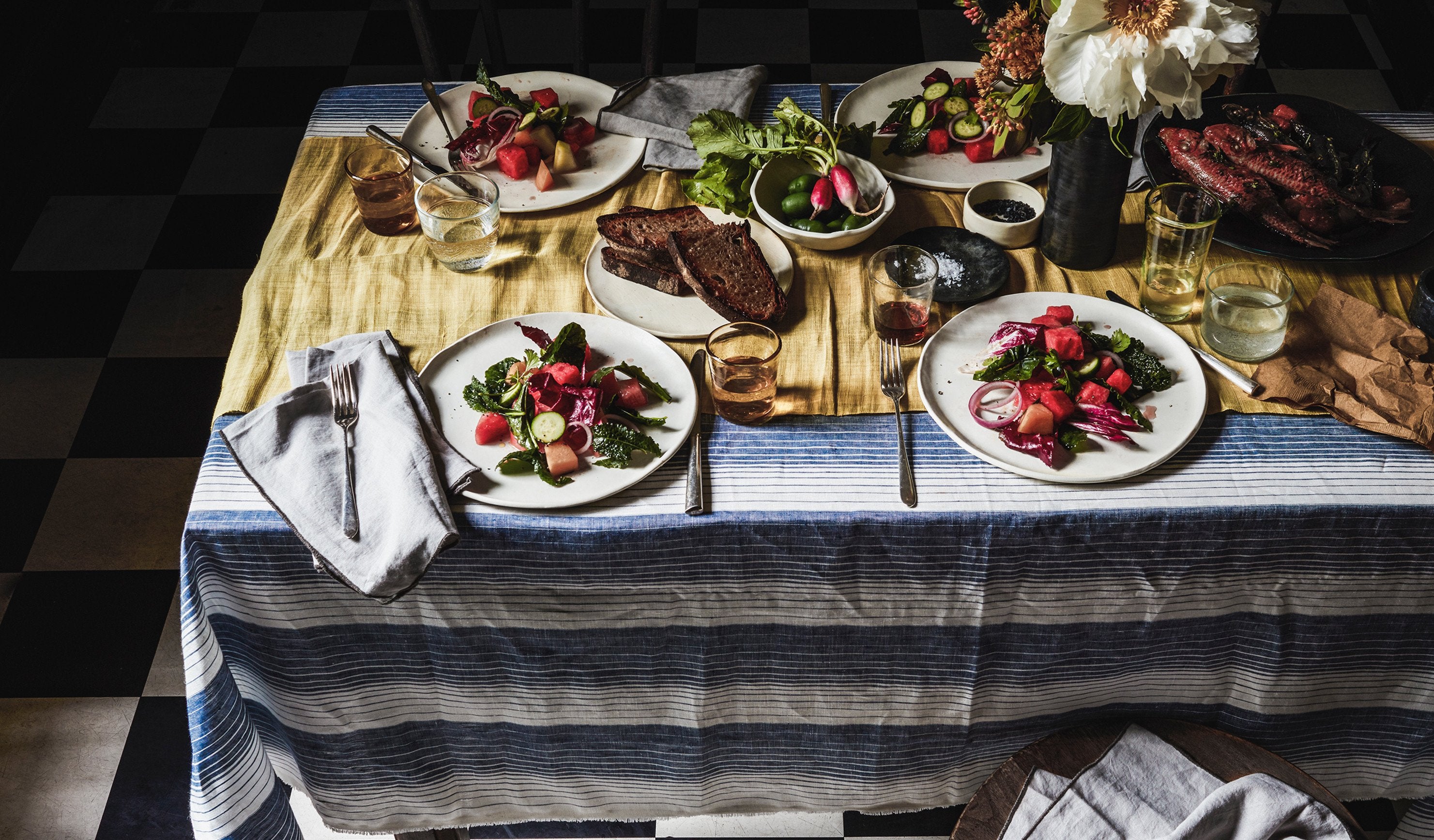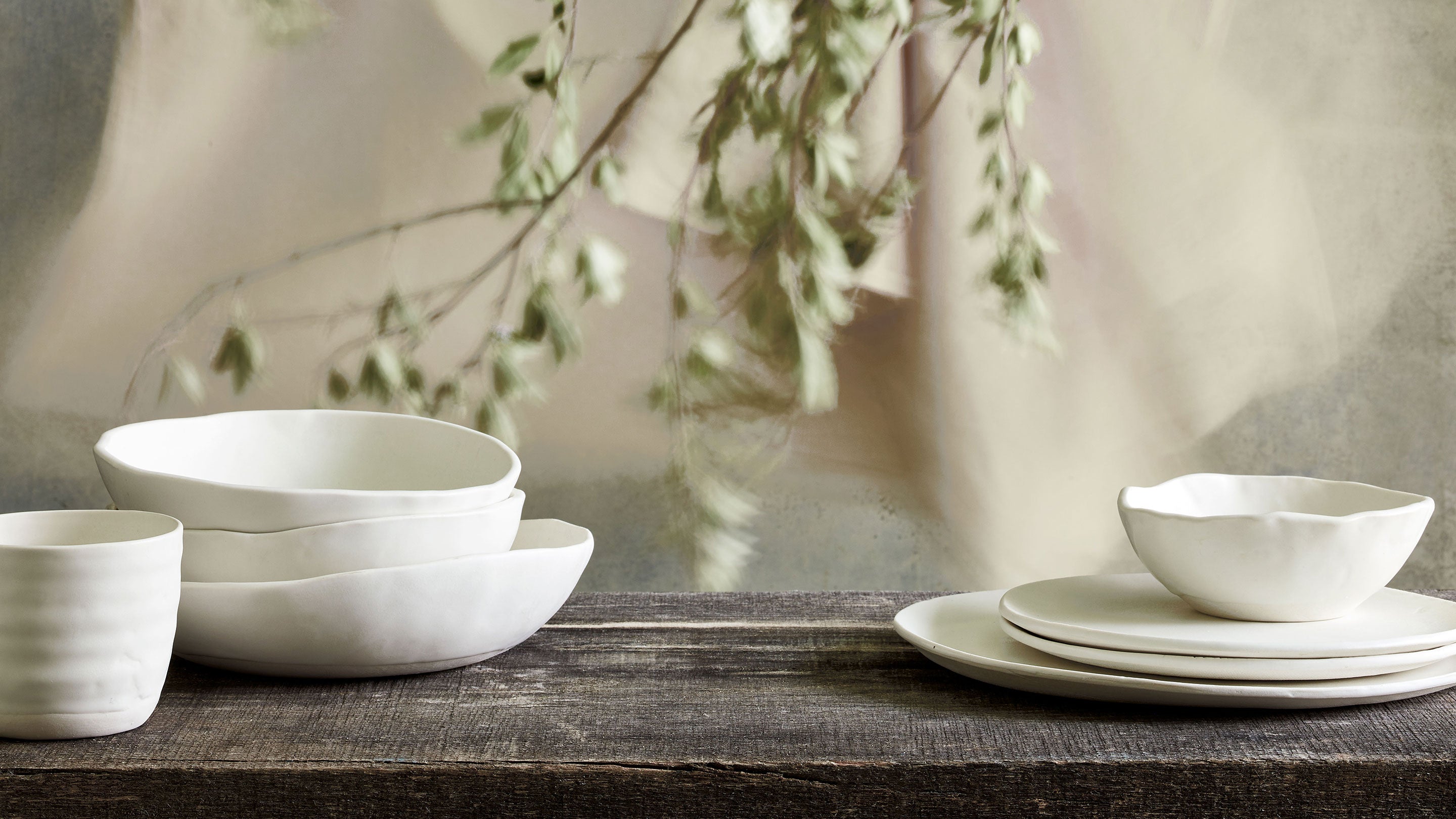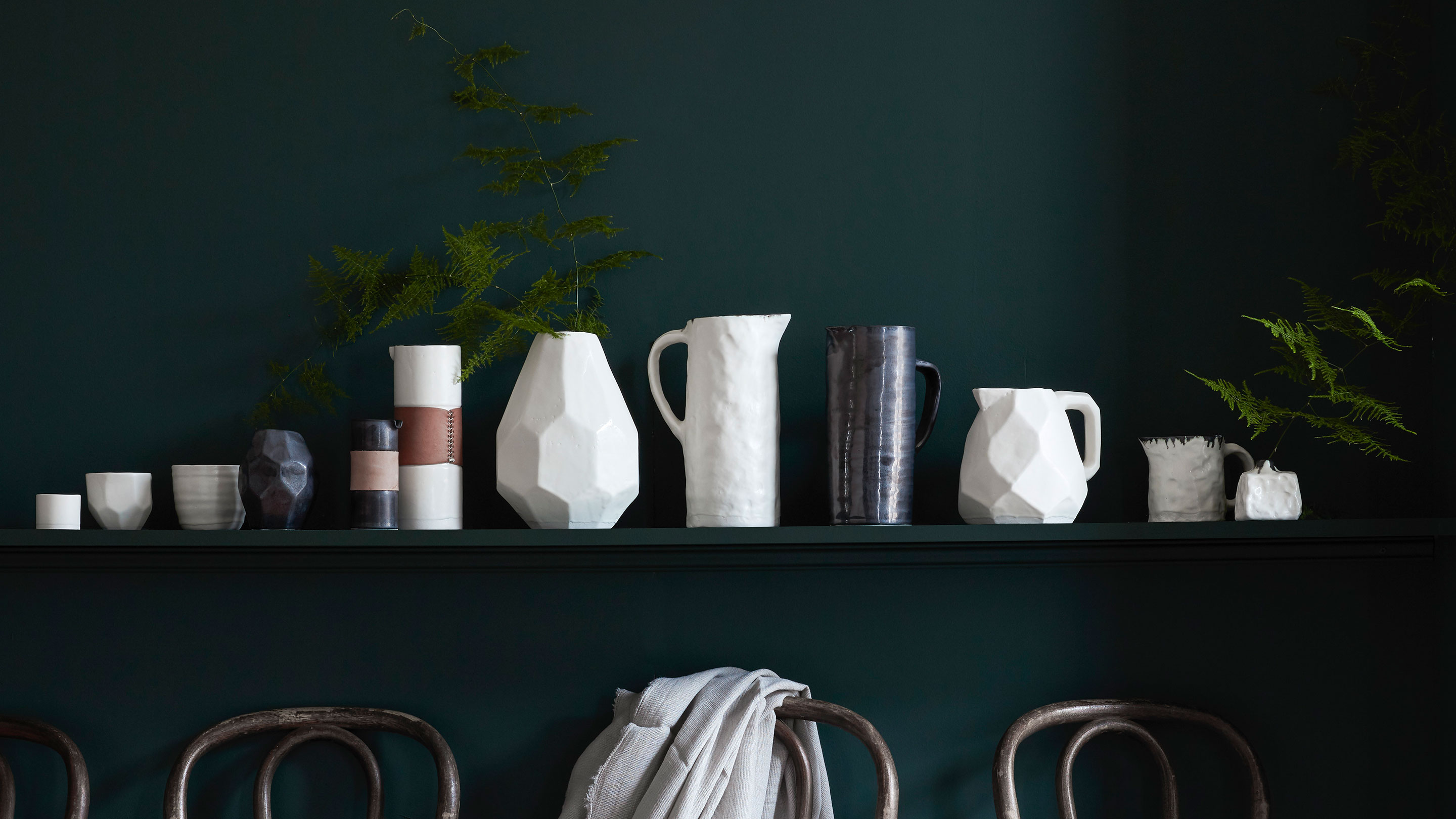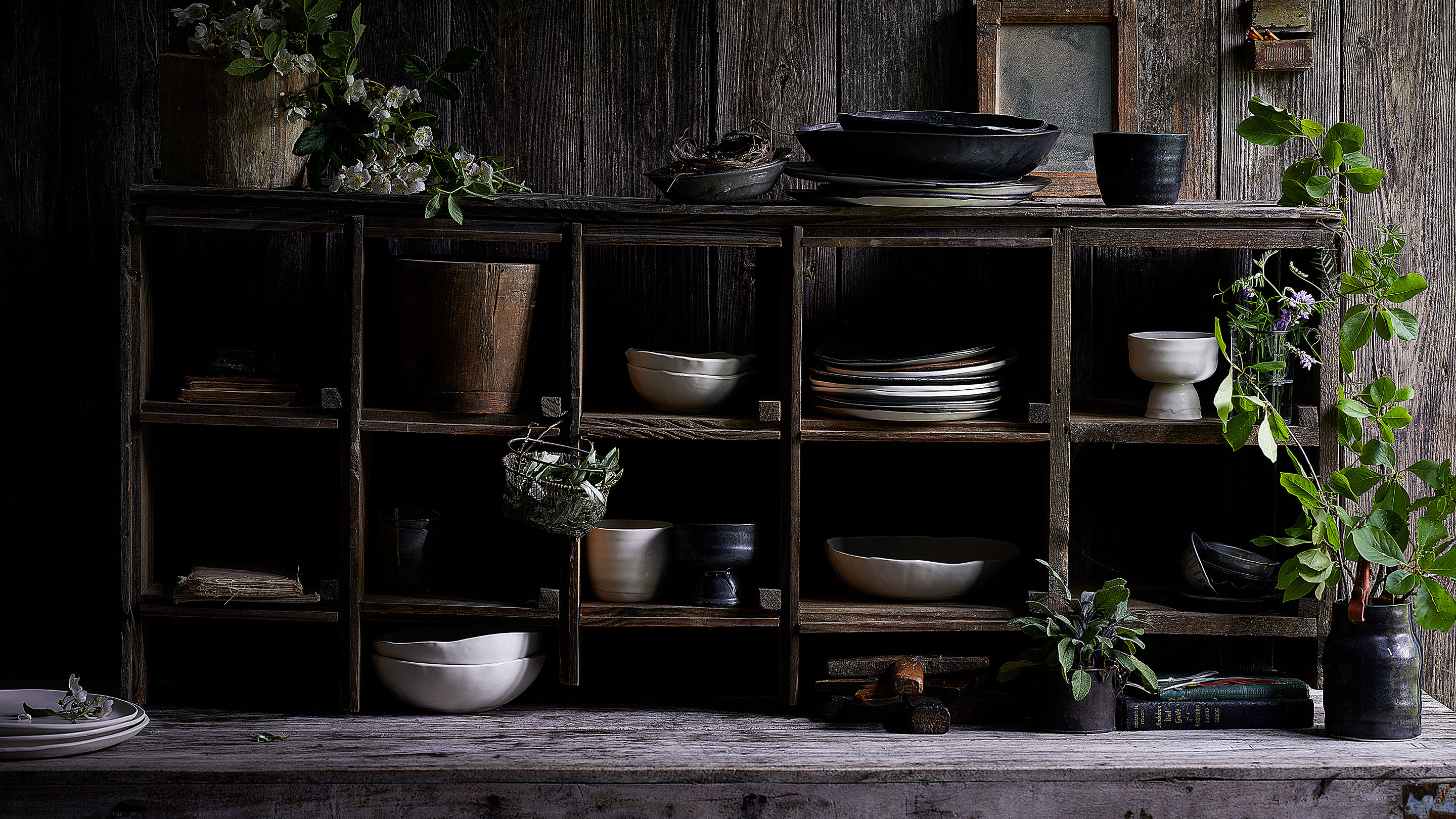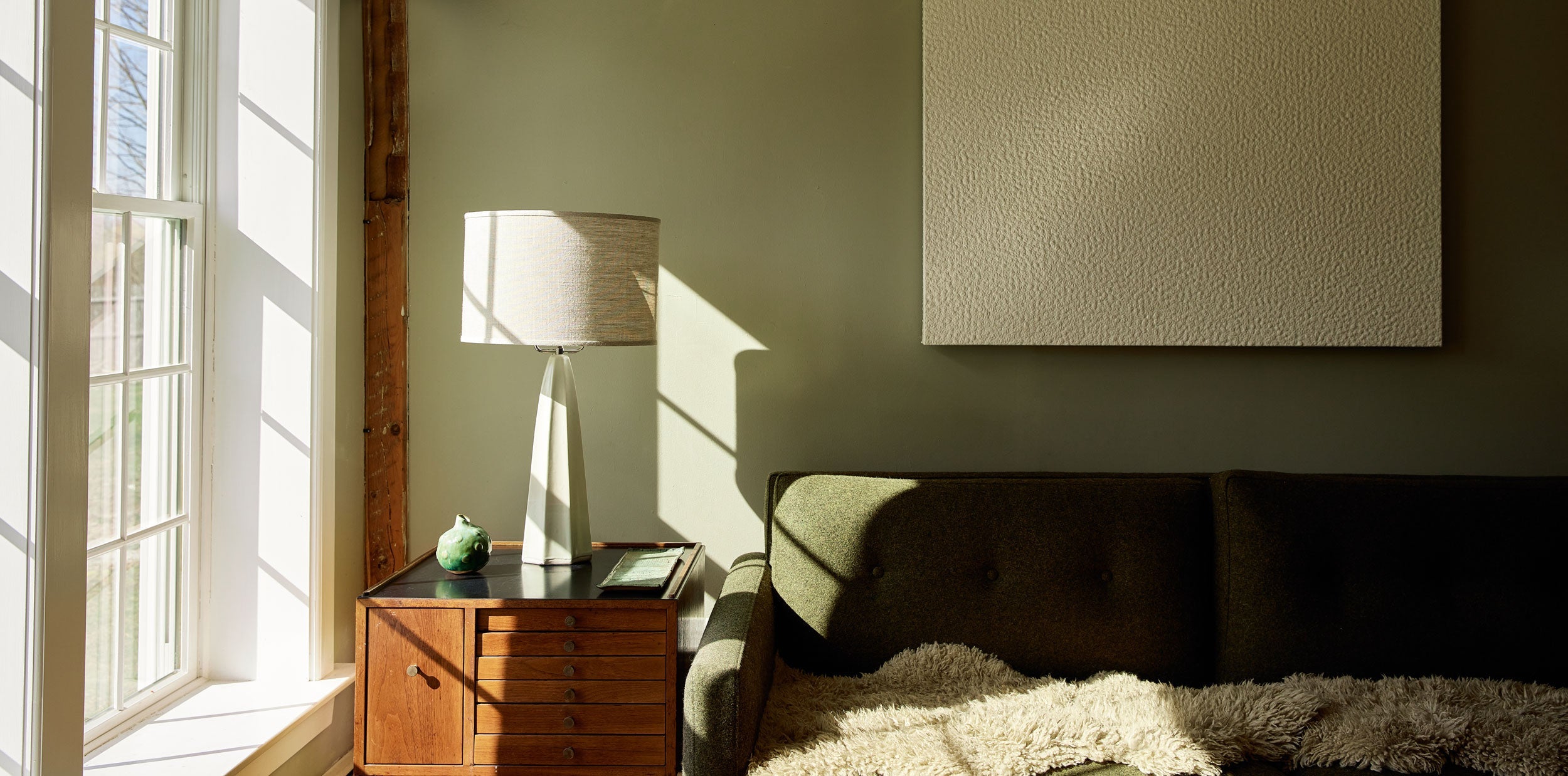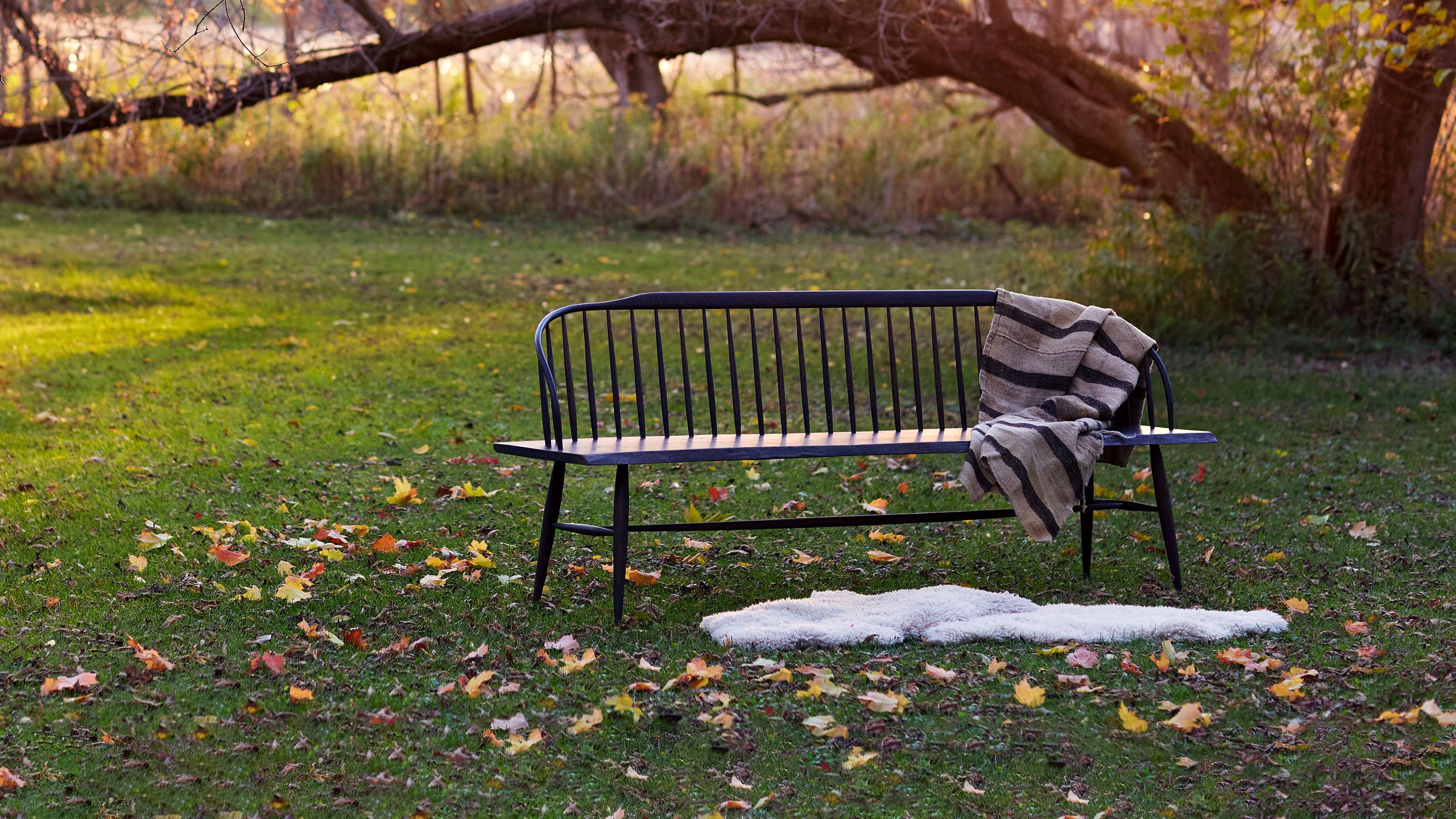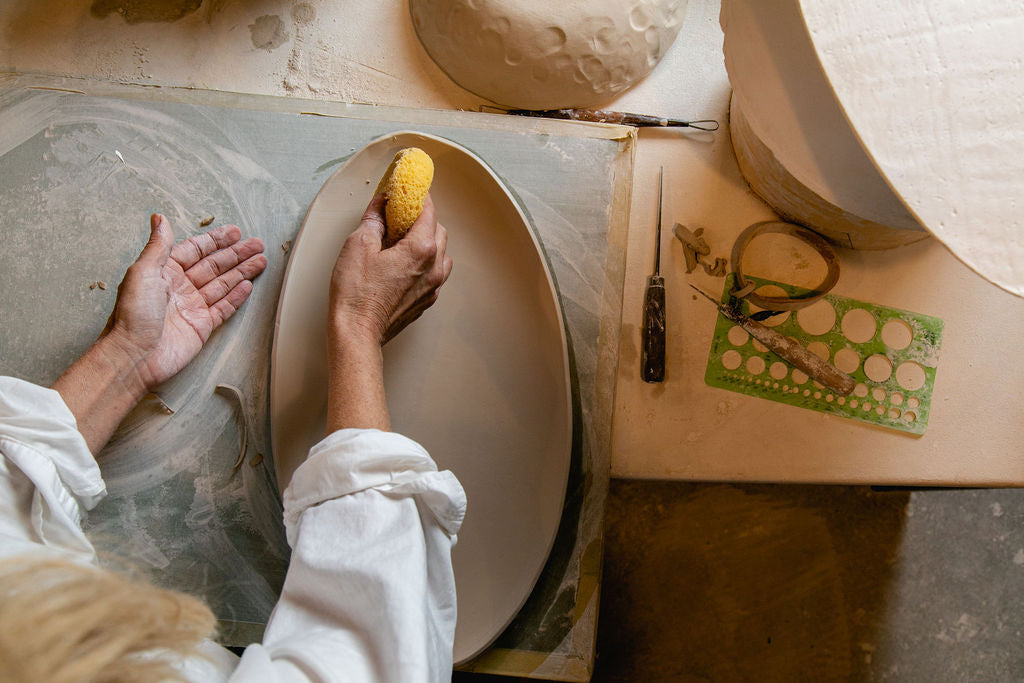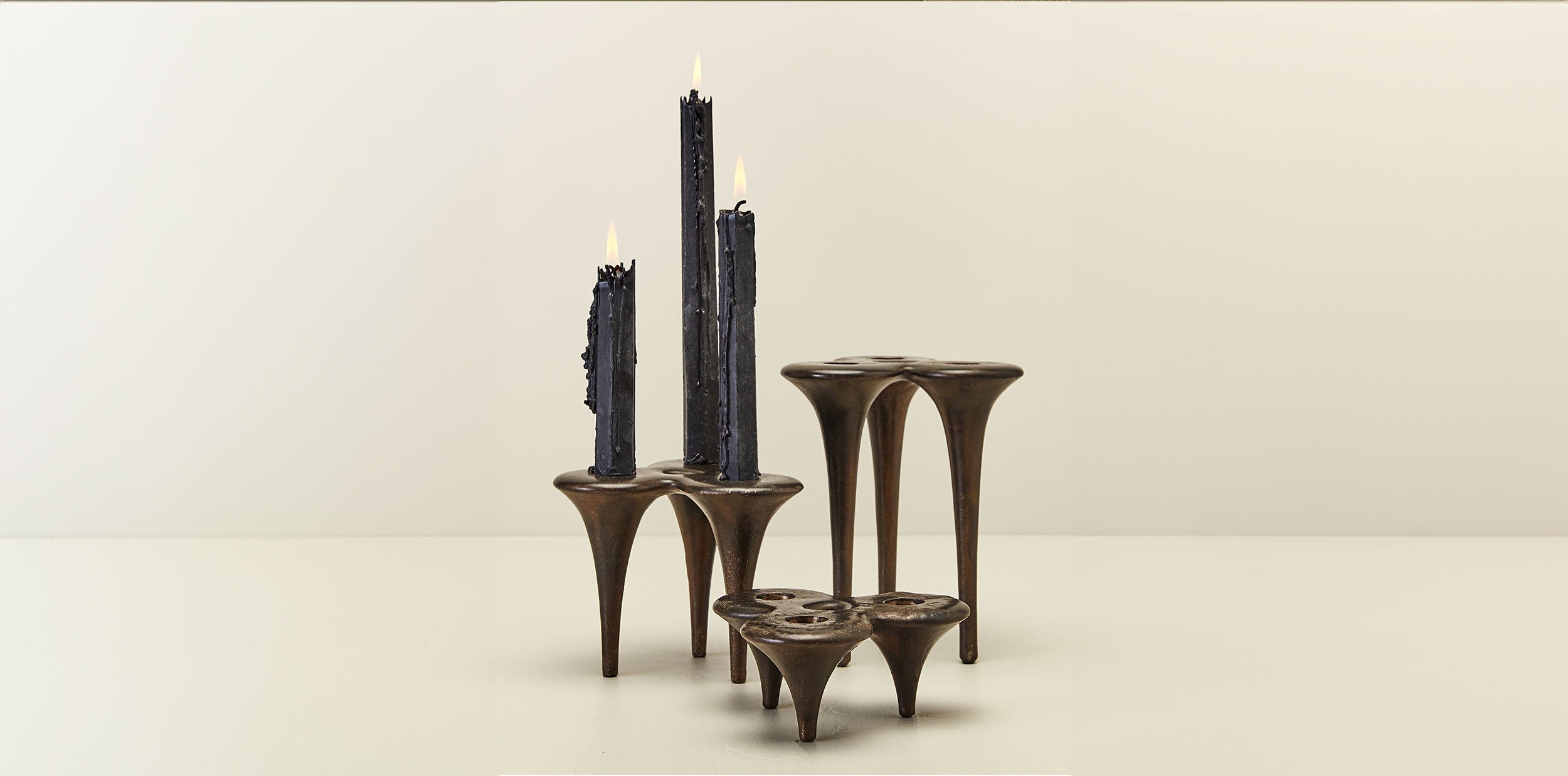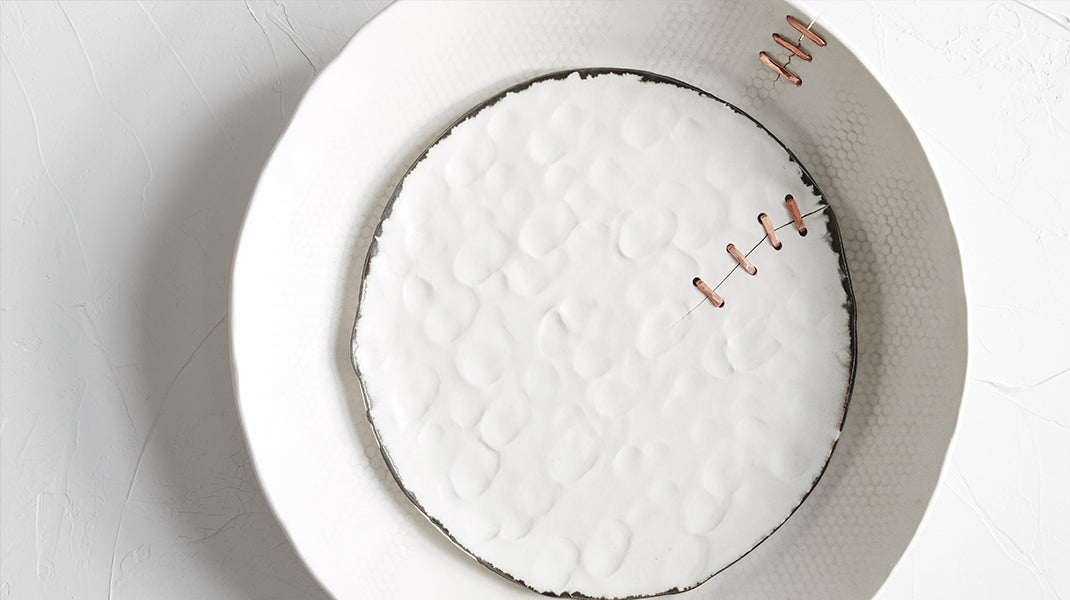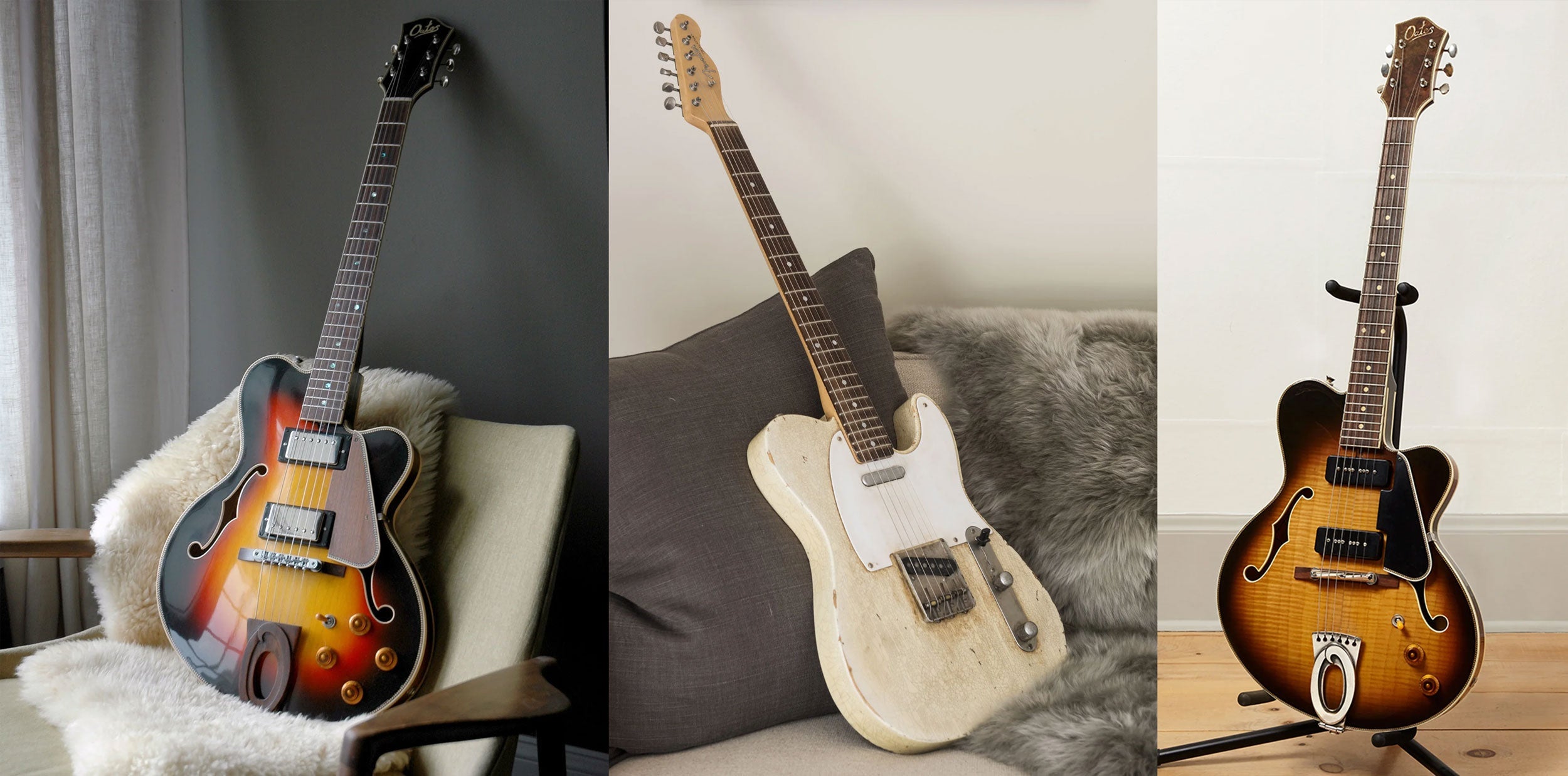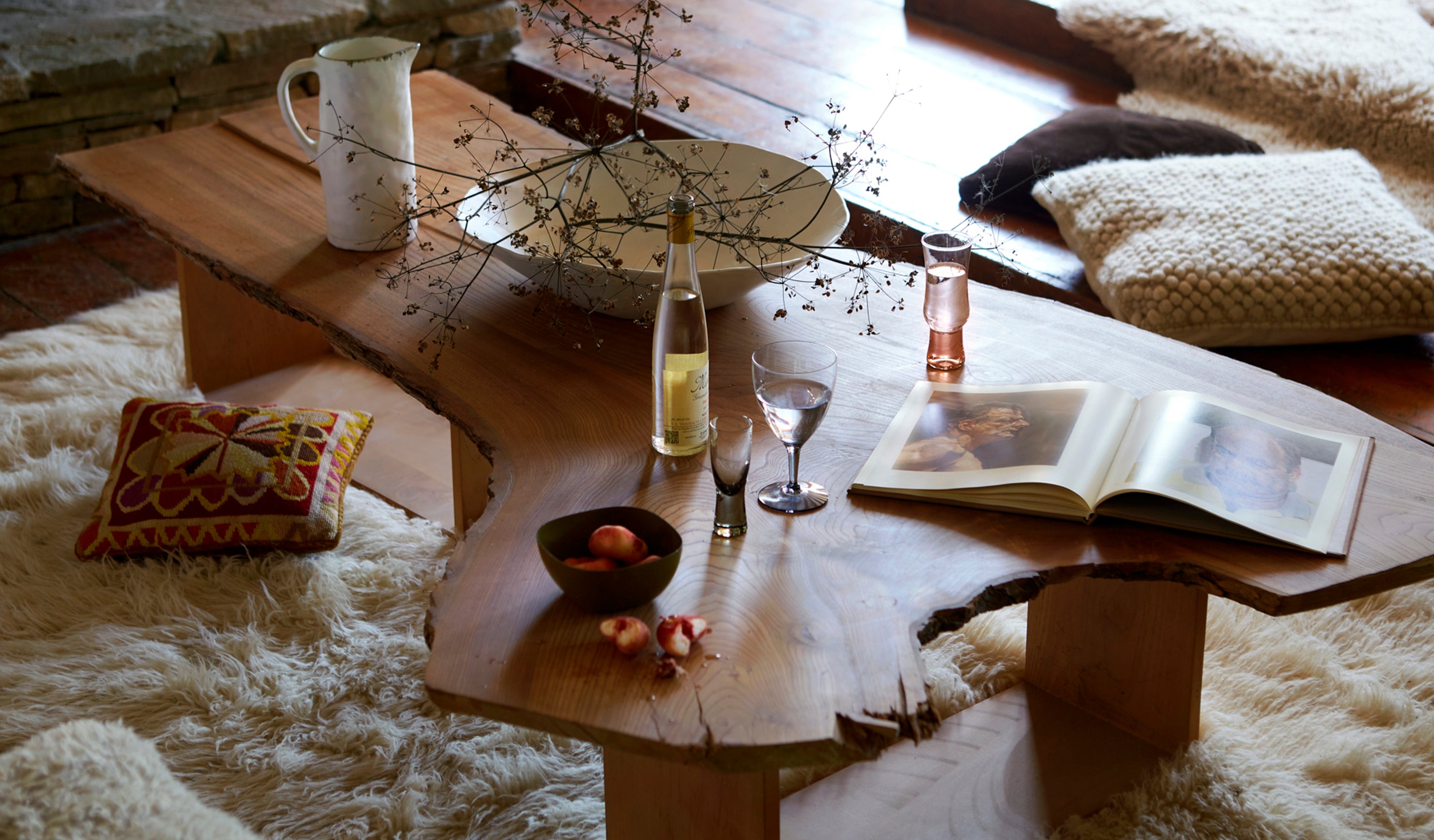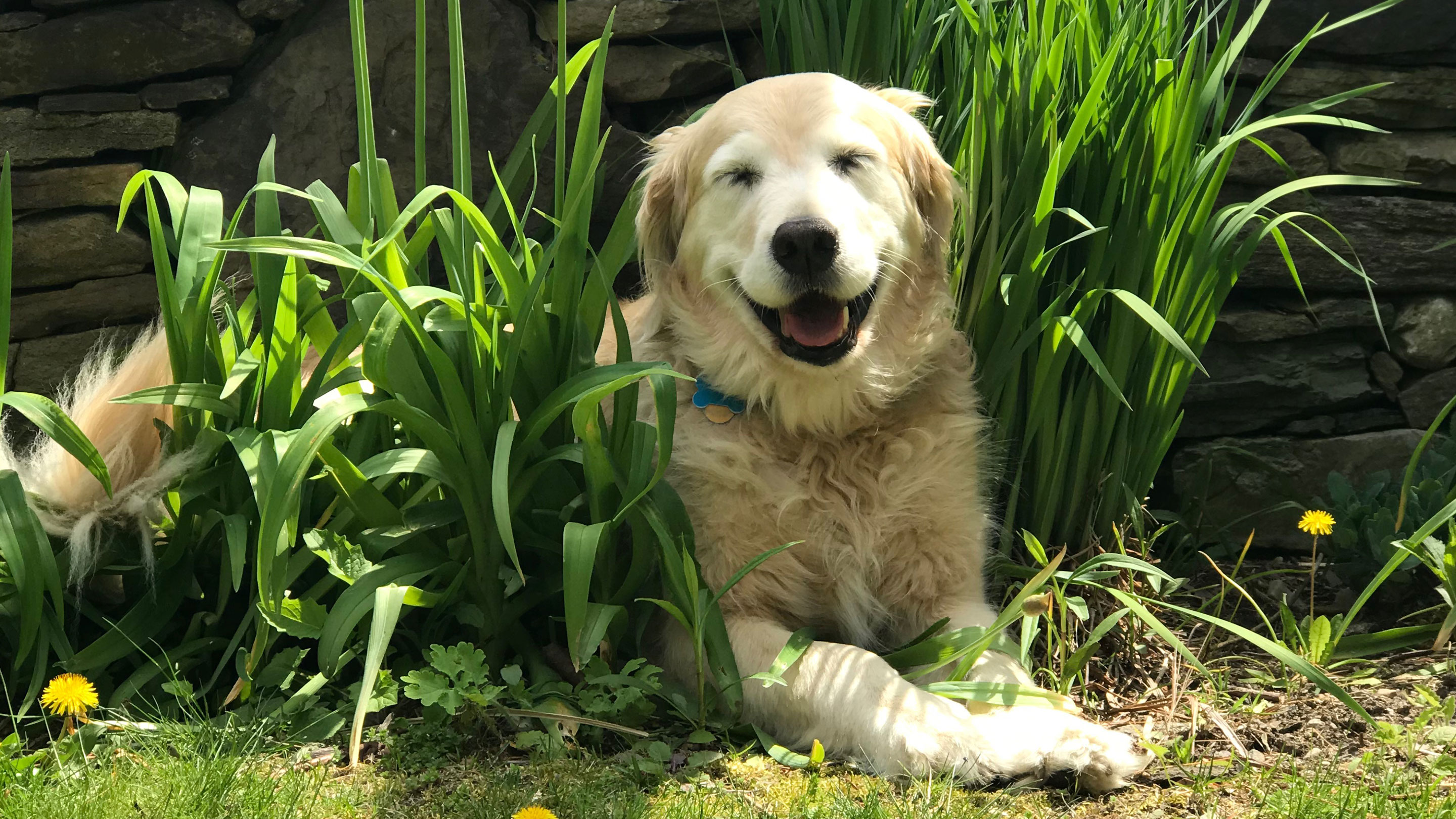Meet the Team

DANA
What was the catalyst for you to leave the entertainment world and strike out on your own?
Honestly, it was a merger. My passion for design, interiors, and food was slowly replacing the passion I had for the music business, but I couldn’t imagine how to move from music to anything else. When my label, Elektra, merged with Atlantic Records, I was encouraged by all, and particularly Daniel, to make my move. I floundered for a while. Then I focused in on ceramics and developing a line. My intent was to use the line to get a job (I really wanted to work for West Elm) but DBO HOME just took on a life of its own and I went with it.
How did you and Daniel come to work together, and what has that been like?
Daniel is a master of many things, and with our business he is often the problem solver. When I needed a surface to prop my work for a trade show, he made me a stunning live edge tabletop with really basic legs and no finish. It was a great prop but something he just quickly put together – and everyone wanted to buy it. So for the next show I suggested he design and build a few special pieces that we could have for sale and ABC Home bought them all. It was really exciting. From then on we figured we made a pretty good team.
Daniel and I work well together. Most of the time our meetings take place around the kitchen table or while walking our dogs – those are the only times we are not working in our separate studios. We collaborate on concepts but I rely on him a great deal to make those ideas come to life. It really helps an idea person like me to have a collaborator who can also figure out how to make those visions work.
Where do you find inspiration for your work?
I find inspiration everywhere, but I especially find it in the pages of the interiors and food magazines I collect. I get a great deal of inspiration from the beauty on those pages. Living in the country is quite inspiring too – being surrounded by natural beauty certainly influences my point of view.
Describe your perfect dinner party, from the setting to the menu, the music, and the guest list.
There are so many people I’d love to meet and share a meal with, but perfect would be a combination of close friends and family, outside on our patio in the summer, looking out to the wetlands. I make a mean beet and feta pizza (topped with caramelized onions) so we’d surely have that, with something off the grill and whatever I can pull out of my garden (in addition to those beets). I think the playlist would be something that reminds me of childhood summers, like 70s rock and R&B.
You've said your first love was the guitar - acoustic or electric?
My first love is acoustic and it’s still with me: a 1969 Martin 00028. I’ve had it since I was 15 years old when I bought it off my guitar teacher. There was a time that all I did was play guitar. I really should go back to it. I went electric after hearing The Pretenders for the first time. Oh, to be like Chrissie Hynde…
Beatles or Stones?
That’s a ridiculous question. Both. One should not have to choose between the two.
Baking or cooking?
Cooking, absolutely. In fact, I would say that I work the same way I cook: I have a general idea of what I want to do, I’ve learned the techniques, then I just let it flow. I don’t have the patience for the precision of baking, but fortunately for me, Daniel does.
You left bustling NYC for pastoral Litchfield County, Connecticut. What, if anything, do you miss about NYC? What’s the best part of living in the Northwest Corner?
I do miss my old neighborhood in the West Village. I loved living there on my tree-lined block. But mostly I miss my friends and the food, so I go down to the city from time to time to get my fix. Living here in the Northwest Corner suits me well. Sharon, Connecticut, is absolutely beautiful and we’ve made some great new friends. I never tire of the rolling hills, fields, farms, and gorgeous farmhouses. And although there really isn’t that much going on in my town, I can drive 20-45 minutes in any direction and end up someplace with great food, shopping, and art. I have my own vegetable garden that I love and two hilarious dogs. It’s not bad, even if I can’t order in dinner.
What was the most exciting moment for you in the record business? What was the most exciting moment for DBO HOME?
Standing at the soundboard in the middle of 40,000 Metallica fans in a football stadium parking lot for a free show was a pinch-me moment when I was in the record business. Sitting on the floor two feet in front of Björk in her studio as she performed her album, Vespertine, for 50 of us… yeah, pinch me. But I’d say taking the heavy metal band Pantera on the Time Warner jet to a bunch of cities to launch their album, Far Beyond Driven, was the most exciting. And not just because of the jet (which was amazing) or the thousands of fans that showed up at each event. It was the fact that the album debuted at #1 on the Billboard Chart and everybody at the other labels was calling to ask me who this Pantera was!
With DBO Home, one of my most unforgettable moments was when the buyers from ABC Home came into my NY Gift Show booth and said I was going to be their new vendor. I went to ABC Home nearly every week while I was in the music business, just to gawk at all the gorgeous things they carried. The store was nirvana and total inspiration for me. I was knocked out when they became my retail partner. I’m still knocked out! Another exciting milestones was when West Elm asked if I’d like to collaborate with them (remember, they’re a big part of the reason I started DBO HOME). I thought someone was playing a joke on me, but it was real. We’ve had a great relationship ever since, collaborating on designs for everything from tableware to lighting.

DANIEL
You were in the enviable position of being represented by 303 Gallery in NYC for over a decade. How did you get there?
I initially got involved in the New York art world working as an assistant to Robert Gober and attending monthly gallery openings. I made friends and got to know the who's who in that world. For a period of time I wasn't making any sculpture work at all, but after about a year and a half I started on a group of sculptures, which was quite different to the work I had been doing in art school. I showed them to my friend, Gavin Brown, who was working at a SoHo gallery. He loved the work and put a piece in a show he curated. The work sold to a prominent collector, but more importantly, an art critic saw it and put it into a show called "Post-Human,” which toured a number of cities in the States and Europe. The piece was mentioned favorably in a number of reviews and soon after 303 Gallery asked if I would like to show with them. I accepted.
How did you make the transition from fine art to design? What are the similarities and differences between the two?
My sculpture had a strong cartoon, even toy-like, look about it. I always wanted to make something that would appeal to a mass audience. When a toy company called Bozart – that specialized in toys designed by artists – approached me to design a series of toys for them, I jumped at the chance. I really enjoyed the experience and started focusing more on toy design than making sculpture. I then taught myself to use 3D graphics programs (in fact, I was an early adopter of 3D printing for my model making back in 1999). I then worked with Honeybee Robotics (they have equipment on the Mars Rover) making a radio controlled/infrared-seeking bug. From toys I went to 3D illustration for a point-of-purchase display company. Designing furniture specifically came from making display pieces for Dana's ceramics. I wanted to design something that complemented the simplicity of her ceramics with a natural, organic feel. My approach to designing a piece of furniture is actually closely related to the way I make sculpture.
How does your background in fine art inform the pieces you create today? Why wood?
If I am designing a piece for a show and there are no restrictions on my creativity, I like to go to the sawmill without any preconceived ideas and look through what they have. Generally I like live-edge boards. Once I find an attractive piece of wood, I start thinking about what type of furniture it would be best suited for. I gather other pieces and figure out how it would best go together. Sometimes I make a quick sketch, but I rarely draw up plans; I prefer an intuitive way of designing that adapts to the materials, just like working on a sculpture. Rather than imposing what I want to build on the wood, I let the wood decide what it wants to be. That's not to say that I don't also make pieces to order. Most of my commissions are quite specific to what the client wants, but even then I pay close attention to what the wood wants.
I've always worked in wood. When I was a teenager, my interest was in guitar making, so I collected the tools I needed to build a bass guitar. And when I got interested in sculpture, wood was the first material I gravitated towards.
You’re a bit of a Renaissance man. What creative work do you do when you’re not designing and building furniture?
I still build guitars – the most recent one was a semi-acoustic – and play them as well. I've built wooden boats that we row and sail on the lakes nearby, and I hand sew the sails myself, too. I’ve also built many bows and arrows, and I’m currently working on a composite bow made of wood sinew and water buffalo horn. I like to paint, sculpt, and draw, and I'm also working on a wooden marionette of a Roman Centurion for a client in Texas. I just like making things.
What surprised you most when you came to live in America and what do you miss about England?
I think the biggest difference is the history. I think I took history and tradition for granted when I lived in England – it’s just part of who you are. Comparatively speaking, this country has very little history. After living here for a few years and then going back, it suddenly hit me. I became aware of how much my upbringing under that influence affected who I was, in both positive and negative ways.
If you could live in any other time and place - real or fictional - what would it be and why?
I think living sometime before the Industrial Revolution would definitely suit the way I work. On the other hand, craftsmen of that time were also quite restricted in their freedoms. The Renaissance seems like a creative period that I might have done well in.
Word is that your bread is so good you could give up making furniture to become a baker. What’s your secret?
I don't really have a secret, other than my bread starter. It's the same one that I have kept alive since the summer of 2011. I make bread a couple of times a week and keep the starter in the fridge, feeding it every few days.
You left city life in NYC for a more rural existence in Litchfield County, Connecticut. What, if anything, do you miss about the city? What’s the best part of living in the Northwest Corner?
I don't really miss the city. It's changed so much since we lived there – it's not the same place. I do miss the variety of restaurants. There are good restaurants here, but there are so many more in the city. The best parts of living in Litchfield County are that you can grow your own food, see the stars at night, and hear, see, and smell nature all around you all the time.
If you couldn't be an artist, what would you be and why?
If I couldn't make things with my hands, I would have to do something else creative. I wouldn't be happy otherwise. A musician, maybe.
